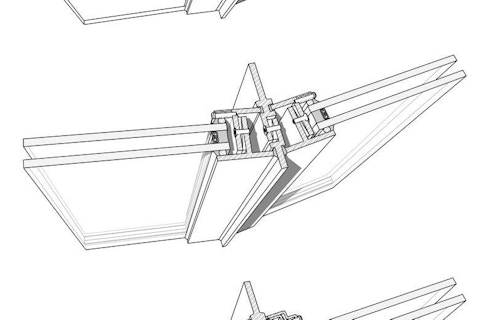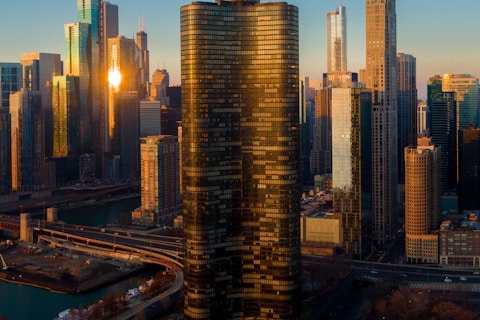Building Buildings, Community, and Wellbeing
If you’ve been reading our newsletters for the past few months, you’ve likely noticed that editions have taken on monthly themes. One of the things that I like most about buildings is how multifaceted they are and the impact they can have on us and the world. We focus often on sustainability because, lets face it, where would we be without an inhabitable planet? In March’s issue, we focused on health and wellness and how design approaches may be impacted given the current pandemic. Last month, there was a heavy focus on research and development, demonstrating how much potential we still have with our built environment, particularly if we can master the integration of academia and industry. This month, our content is focused on how buildings impact people and their well-being. How does their shape, look, and design impact how we function? How are our daily lives, our culture, and our society influenced by the built environment around us?
My name is Brienna Rust, I work for Simpson, Gumpertz & Heger, and I am a content editor for SKINS. I also have a shameless affinity for buildings, their cultural influence, and their ability to instill awe. Sometimes, for me, that awe stems from technological advances in the buildings I see in construction and other times it stems from the discovery of long forgotten secret rooms during field investigations. It’s hard to not wonder about their history and what people used them for. That said, I ended up in building envelopes because it’s the skin of the building that I feel can be the most awe-inspiring. Think of the New York City skyline with the Chrysler and Empire State Buildings or the Eiffel Tower in Paris and the Pyramids in Egypt. People travel the world over to see these buildings and for no other reason than their inherent magnificence.
What is it that makes these buildings such an attraction? Why do so many people flock to them? I don’t have an articulated answer to these questions, but I do have some articles and videos to present in this month’s SKINS edition that highlight ways that buildings impact the way we think, the way we move, and even how happy we are.
Winston Churchill, in a speech in the House of Commons in 1943, said “We shape our buildings and afterwards our buildings shape us.” I’ve highlighted his speech as the first article to point out that this month’s topic isn’t a new concept and was one that was understood by Churchill even 80 years ago. Following Churchill’s address, we have Jeanne Gang’s TED Talk where she discusses some of her successes in putting this concept into practice. One of the things she highlights in her talk (and what ends up being a common theme in most of what is presented this month) is how important people are and the role buildings play in facilitating community.
The next article in the lineup talks about the architectural symbolism of the Smithsonian National Museum of African American History and Culture. The design team was able to integrate cultural elements from Africa and America into the building’s design so that it not only served as the museum’s housing but also became an integrated component of the museum’s display of history. An article written by Paula Melton in Building Green also discusses this building and states that “The makeup of the project team profoundly affects design. A lack of diversity manifests as architectural uniformity – reflecting injustice in the very form of the building.” The next video introduces a similar concept and is part of a course description from Harvard University’s Graduate School of Design. It presents issues of social injustice in the built environment by looking at the impacts of history, culture, and identity on design and development.
The next two articles get into neuro-architecture (the study of how the body and brain respond to the built environment) and discoveries regarding how buildings and cities can affect our mood and well-being. Both discuss the potential positive and negative impacts buildings can have on stress levels and how they can be designed to facilitate human well-being. One article focuses on what has been done already and the other, based in Auckland, NZ, focuses on research currently in progress. The blog that follows takes these concepts and makes them more relatable to our daily lives by speaking to them from a more anecdotal space. The author points out that we learned to design zoos in a way that mimics animals’ natural habitat because previous practices resulted in stressed-out and aggressive animals. He questions why we have not learned from the available research and applied the same concepts to our cities and buildings.
To wrap everything up, we’ve got a TED Talk by Vishaan Chakrabarti who speaks about the need to have stimulating cities that are non-homogenous and representative of the people that live in them. He proposes using technology from a holistic standpoint to assist in achieving this, emphasizing the importance of local cultures, community and, again, people.
So, I hope you enjoy this month’s content but, if I’m being honest, my bigger hope is that you find yourself saying “huh, I hadn’t thought of that” or “I wonder…”. I think those moments are the seeds of new ideas, innovation, and collaboration for better buildings and cities.
We’d love to hear from you! Email us at skins@facadetectonics.org.
Best regards,
Brienna Rust, SGH
Guest Editor
The SKINS Team:
Mic Patterson, Facade Tectonics Institute
Executive Editor
Val Block, Kuraray
Associate Editor
Katie Gould, Facade Tectonics Institute
Creative Director
Brienna Rust, SGH
Christopher Payne, Gensler
Content Editors
Nick Carrillo, WWCCA
Event Calendar Editor
Alberto Alarcon, Kuraray
Event Calendar Editor

Brienna Rust
Consulting Engineer
Simpson Gumpertz & Heger
Looking for something specific?
Search our extensive library.
FTI’s SKINS email is the central source for the latest in building skin trends and research.
All emails include an unsubscribe link. You may opt out at any time. See our privacy policy.









